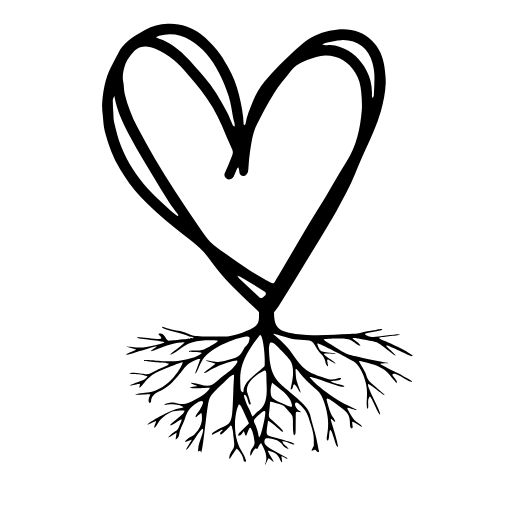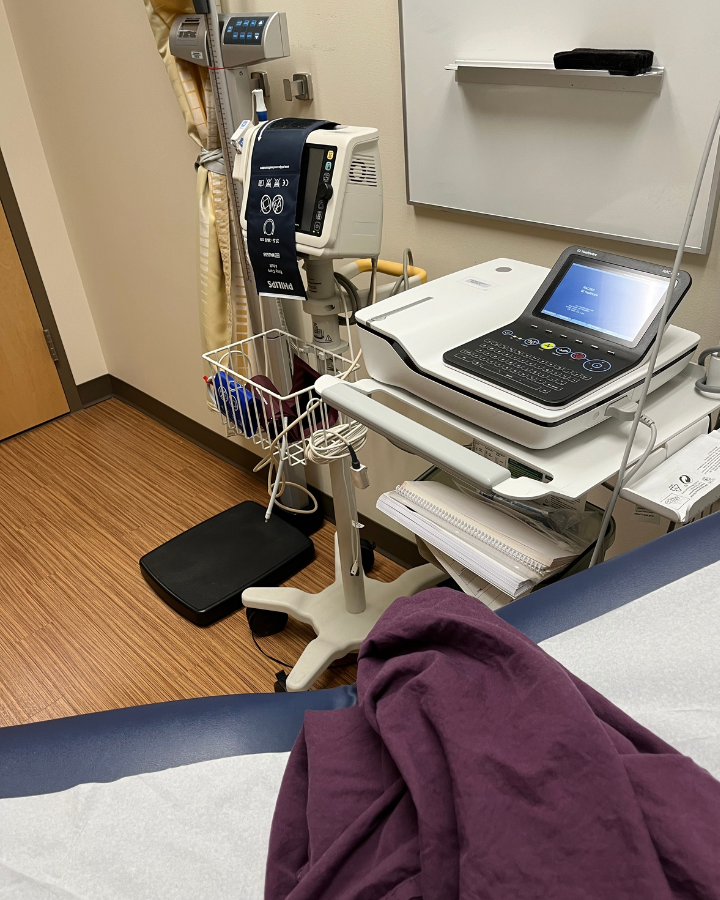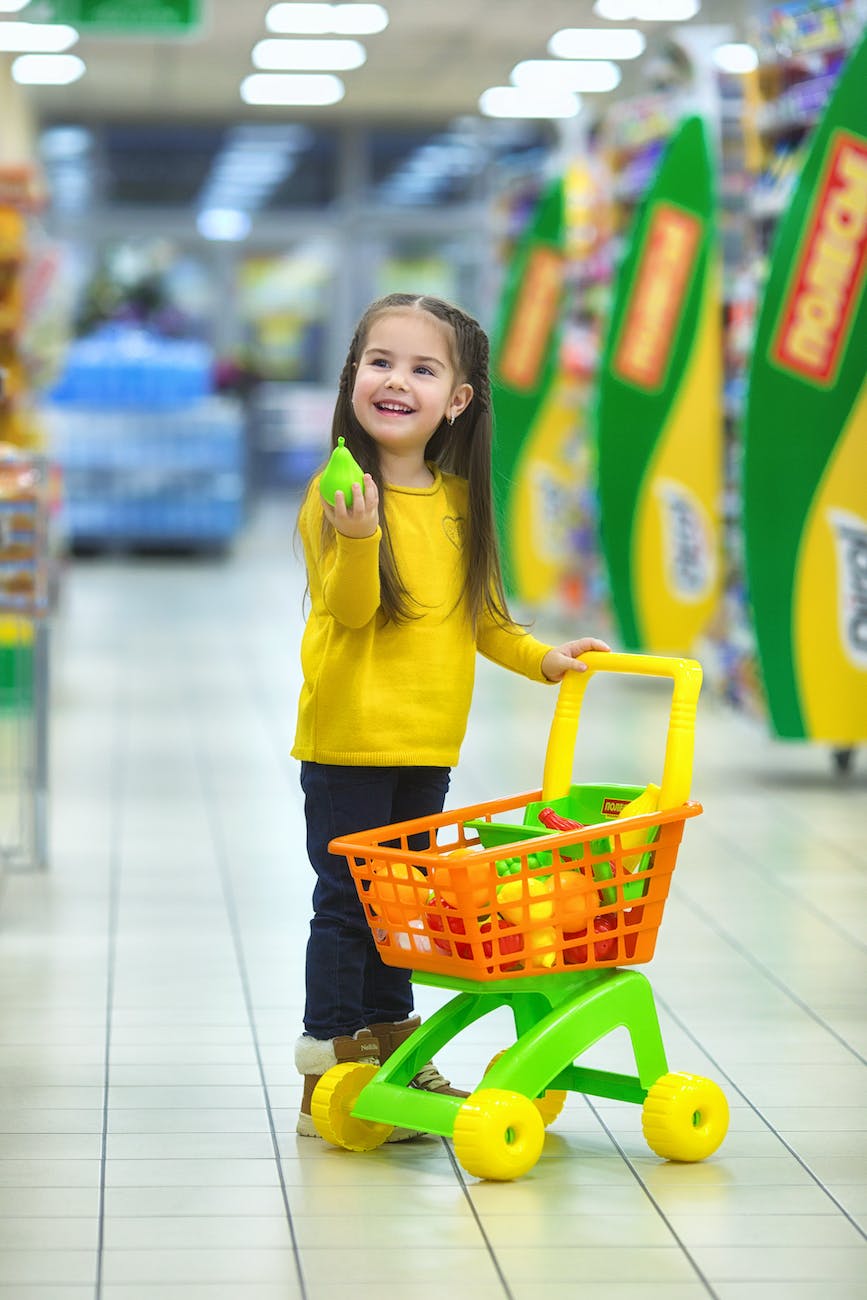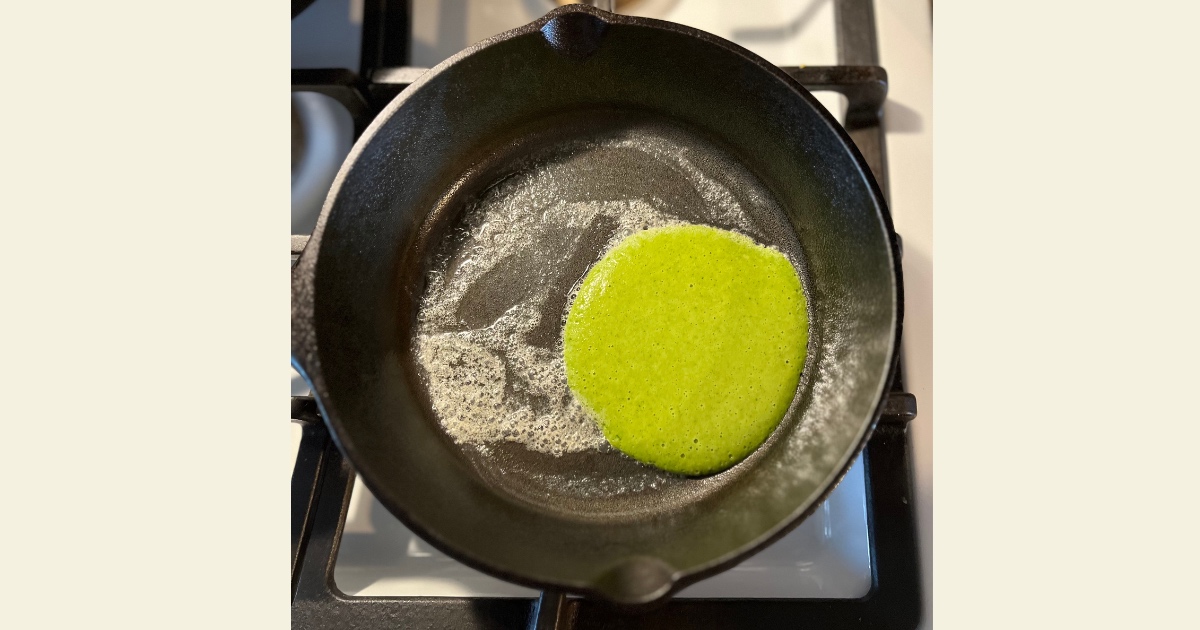Within all potty training journeys, there are hurdles. During the first few years of life, developmental milestones and life changes can impact the potty training journey. While often frustrating to understand and navigate through, hurdles are a natural part of the potty training process which leads us to the ultimate goal – going to the bathroom alone and on (of course) the potty!

We helped our first little one become diaper free by 18 months old. We started our elimination communication journey at nine months old.
As she approaches two years old we still experience occasional hurdles. Learn more about the beginning of the journey, starting at nine months.
This blog will help you understand what elimination communication (potty training) hurdles are, how to hop over them and ways to continue a successful EC journey.
What is a Potty Training Hurdle?
An elimination communication (or potty training/toilet training) hurdle is simply missed opportunities. It can feel like a ‘regression’ during the potty training process as there are more missed opportunities than normal.
Two of the most common potty training problems include resistance towards going to the bathroom on the potty or sitting on the potty and peeing in underwear (or on the floor) upon standing.
Because elimination communication can start from birth, there are a lot of opportunities to overcome ‘potty training hurdles’.
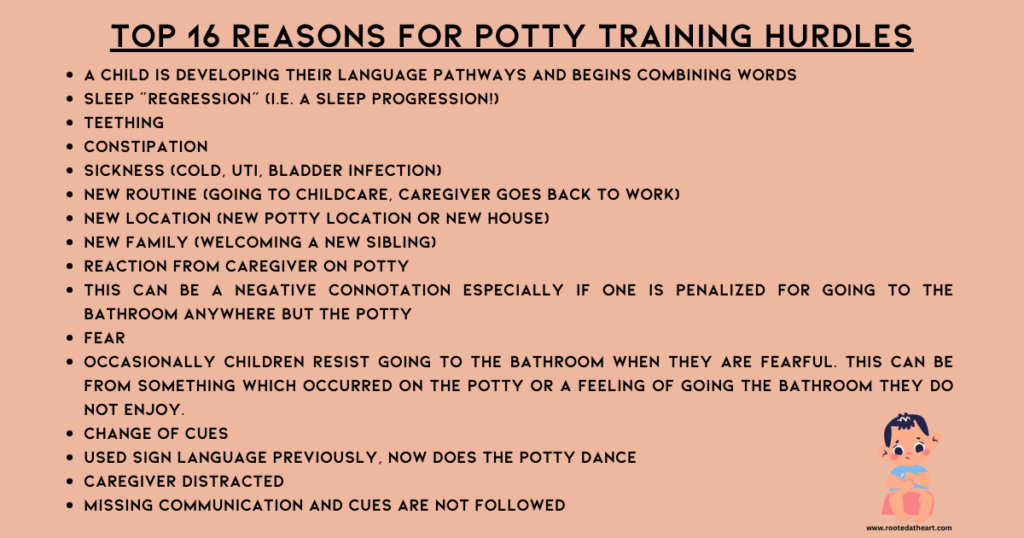
What causes a potty training hurdle?
Developmental milestones or lifestyle shifts are often the cause of a potty training hurdle. It likely occurs when a child is focused on other things outside of going to the bathroom and misses their body’s cue to use the potty. Potty training hurdles can occur when:
- A child is developing their language pathways and begins combining words
- A sleep “regression” (I.E. a sleep progression!)
- Teething
- Constipation
- Sickness / Health issue (cold, Urinary tract infections (UTI), bladder infection)
- New routine (going to childcare, caregiver goes back to work after time off)
- New location (new potty location, vacation (even a long weekend away) or new house)
- New family (welcoming a new sibling and becoming the older sibling)
- Reaction from caregiver on potty
- This can be a negative connotation especially if one is penalized for going to the bathroom outside of the potty or if too much pressure is put on the situation
- Fear
- Occasionally children resist going to the bathroom when they are fearful. This can occur when the potty of going to the bathroom or something affiliated with potty time becomes something they do not enjoy. Some parents think their child will hold a bowel movement because they are scared to let go of their poop. However, this is not always the case. By beginning potty training early (IE using EC), children do not feel like this is an unfamiliar process as they may be familiar with their body parts and the acts our body naturally completes.
- Change of cues
- Used sign language previously, now does the potty dance
- Caregiver distracted
- Missing communication and cues are not followed
- Vacation
Disclaimer: If you notice your little one child is having any problems going to the bathroom which seem out of the ordinary, call your pediatrician for assistance. Sometimes elimination communication hurdles can be a urinary tract infection (UTI), constipation (lack of bowel movement / hard poop) or bladder infection which need attention.
Overall, remember, developmental milestones and life transitions are all normal. They are temporary and these do not require additional stress.
How to get a toddler to relax on the potty
There are a variety of ways to help with potty training hurdles. We have had to come up with alternate ways to encourage the use of the potty for our little one as life changes occur. If you need potty training tips on how to encouraging a little one to stay on the potty, try some of these ideas to help them relax!
- If you have a portable potty option, try changing up the potty location. Move it into another room, face it towards the windows or even offer going onto the ‘big potty’ if you are not already using it. Consider buying a step stool to help the little one go potty on the big potty and then learn how to wash their hands. Actions which help children gain independence can be a big deal!
- Offer something different to look at. For example, this could be a new toy placed on the wall, a new book to read or engaging in your child’s interest while they are on the potty.
- Sing songs, read books, make animal noises, or look at pictures together. Additionally a reward system can come into play, though elimination communication does not follow this route.
- #mom-to-mom-tip: Try looking at some videos and recent pictures. Our daughter has been fascinated with looking at pictures of herself from when she was a baby. Simply playing a one minute video can lighten the mood on all ends. While our household does not regularly use technology to entertain our little one, there are times when it has been useful.
- “Distract” them from what they are doing. By shifting the focus off of the potty, it can help them relax and go. For example, our little one has been loving studying my necklaces and earrings. She also loves putting on bracelets (which are actually funky hair ties). Stickers can also be great as a ‘reward system’ for using the potty!
- Offer an alternate potty. Sometimes our daughter will take us into the bathroom and want to use the ‘big potty’. She is familiar with where mom and dad use the restroom and occasionally wants to sit on the bigger toilet. At this time we do not have a toilet seat reducer or a step to get up onto the bigger potty. Instead, we will pick her up and support her on the potty so she does not fall in.
- Talk about what is occurring during the potty process. Talk about the urge to go to the bathroom, the action of pulling pants down / up and sitting on the toilet. Then explain how the body relaxes to release what it needs to. Finally, discuss the process of using toilet paper to wipe, how to get off the potty, how to pull up pants, and finally wash hands in the sink.
- There are also fun elimination communication books, which teach the process of going to the bathroom. This is one of our favorites –Tiny Potty!
- Take a few deep breaths together to set a positive attitude. Potty resistance can be stressful on both caregiver and little one which can feel like the ultimate power struggle. It can help to take a few deep breaths together to encourage everyone to relax rather than putting too much pressure on the situation. It can be helpful to pretend to are blow out a candle or ‘make a wish’ by blowing a piece of unused toilet paper off your finger tips. Additionally, remember to make a big deal of the positive moments.
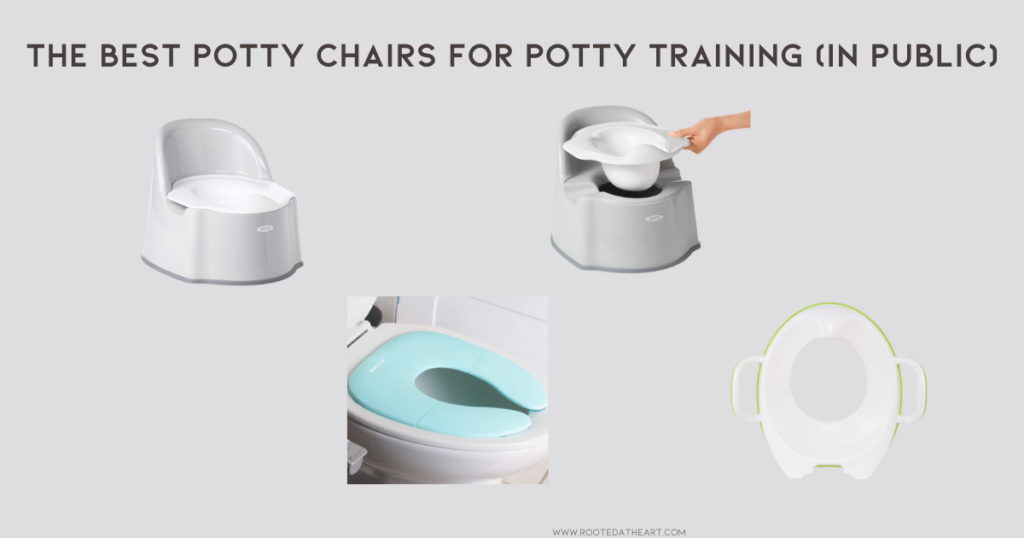
How to effortlessly potty train in public
Going to the bathroom in public can be plain weird. For some, they will avoid it all together even as an adult. As a child, it can be intimidating to use a public restroom for the first time because it is not as comfortable as being at home. There are multiple toilets which can be occupied at the same time, automatic flushers and the loud noise of sinks. Not to mention the occasional unsettling smell.
Because of this, potty training in public can be a common hurdle during the elimination communication journey.
From one mom to another, it does get easier! #mom-to-mom-tip: pack extra stickers in your bag. By placing a sticker over the toilet sensor, it does not flush automatically. As it takes two to get a little one a big public potty, the automatic flushers can be overly sensitive. To prevent the toilet from flushing unexpectedly, or more often than necessary, try the sticker trick! Stickers are easily removable, and they can be used as a one time fix.
Additionally, consider investing in a travel potty. Though they need to be wiped down on the underside after multiple uses, travel potty’s are designed to prevent falling into the potty unlike are toilet paper or the toilet seat ‘cover’. A travel potty chair / potty seat can look like a toilet seat reducer, or simply a portable potty.
If the potty is portable, back into a parking spot and allow little one to go while in the seat or trunk of the car. While it is a different space, the potty device is familiar. Do not forget to pack an ‘oh shit kit’ packed with extra dog bags and plastic baggie for the waste, a spare outfit, toilet paper and wet wipes and anything else which makes the space feel familiar.

Empowering toddlers with choice during elimination communication
- Give choices
- Toddlers love choices! Whether it be the location of potty (portable potty, potty chair, or a toilet seat reducer on the big potty), color of underwear (the one with the donuts or the one with the dinosaurs) or the book they read, having a choice makes toddlers feel their opinions matter. It can also help them appreciate the process more because they are able to state their opinion and make a decision.
- It’s a learning process (on both sides)
- While it can be equally frustrating and disheartening when a little one says they do not need to go potty, but your mama heart just knows, remember they are still learning. Do not force a child to sit on the potty when they do not want to. Encourage them to let you know when they have to use the potty and furthermore, help them understand what happened (I.E. wet underwear / pants / floor) when they did not use the potty. Remember this process can seem like it takes a long time. Remember nothing is harder than the first time they are placed on the potty. The potty training process is a multiple, full day process which does not happen in three days like social media likes to make us think.
- Communicate the missed opportunities
- Shame and blame should not be involved in elimination communication. When a missed opportunity occurs, connect with your little one and get on their level to communicate what happened. Ask if they knew they went to the bathroom in their underwear and if they do not – teach them what it means when this occurs. Show them their underwear and what ‘wet’ means. Encourage them to let you know when they need to use the potty next time.
- Celebrate the successes
- Showing appreciation during the elimination communication process is important. By saying ‘thank you for telling (mama / dada / insert caregivers name here) you had to go potty’ or ‘thank you for going pee / poop on the potty’ or ‘doesn’t your body feel better now that you have gone pee / poop on the potty’? By celebrating the wins, they will share the happiness with you. Additionally, show how exciting it is to get rid of the disposable diapers and cloth diapers! Make a big deal of putting these items away as a part of the process – for good!
- The Positive Feedback Loop
- One of the most important things is making the potty training process a positive experience. Remember a child who is suddenly changing their elimination communication habits is not doing this out of spite or to upset you. They are learning, and so are you! The energy you share with your little one can be felt in return – whether it be positive or negative.
- If you come into the moments of elimination communication while being frustrated or upset, the little one will feel this. The energy you bring to this experience will be received and reciprocated. Keep things light and positive when possible.
How potty cues change through time (with an example)
Children continuously develop their style of communication with time. While one child may have used sign language before to signal they have to use the bathroom, they can change their form of communication has they begin to communicate in different ways. Sign language can turn into a potty dance, which can then change into saying ‘pee’ or another verbal cue.
Our most recent experience was when we analyzed why our daughter stopped using hand signals to tell us when she had to use the potty. We realized she started verbally communicating more, but she did not have her own phrase for communicating the need to go potty. To encourage a new method of communication, we offered a question and an answer.
Analysis: How can we encourage little one to let us know when she has to go?
Question we asked: Do you know what you would tell mom and dad next time you have to go potty?
Answer / Phrase: ‘Mama, pee’ or ‘Daddy, pee’.
While this phrase came out different (‘pee, mama’ or ‘pee, daddy’), we knew what she meant. When she started walking to the potty and telling us she had to go to the bathroom, we knew we made strides to communicate EC again! It is always amazing when a little one connects what is happening within their body and can then verbalize it.
Diaper free day
Occasionally having an underwear free or diaper free day can help encourage use of the potty. This can help encourage a little one to go pee on the potty when they need to without prompting a caregiver. It an also help a child identify when they go to the bathroom as pee will trickle down their leg if they do not make it to the potty.
We actually tried this with our daughter once and were amazed when she left the room and went to the potty independently. Then she wanted to take care of the potty without any assistance. It was empowering for our little one to have the freedom to use the bathroom when she wanted.
In the end, remember potty training takes an average of six months to complete. The popular ‘three day to diaper free’ methods are not very realistic. When you add in travel, hurdles and even sickness, the process can continue for an extended period of time. The process is definitely worth it!
Did you experience any hurdles while potty training your little one? Share your potty training tips below and good luck!
